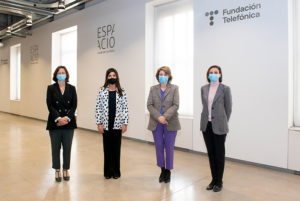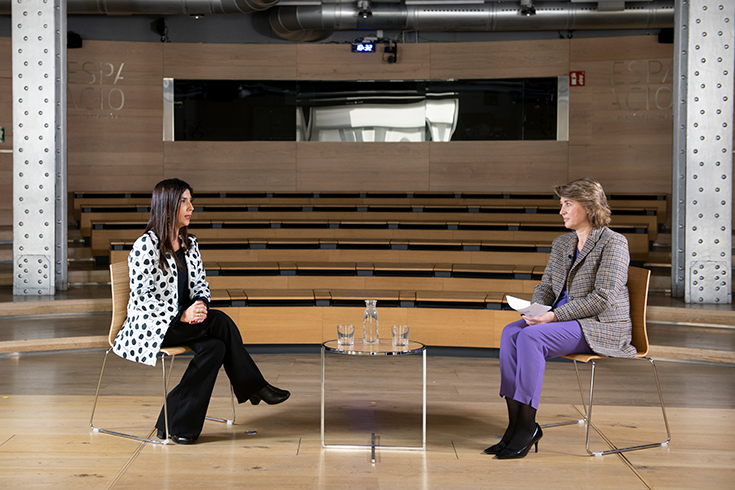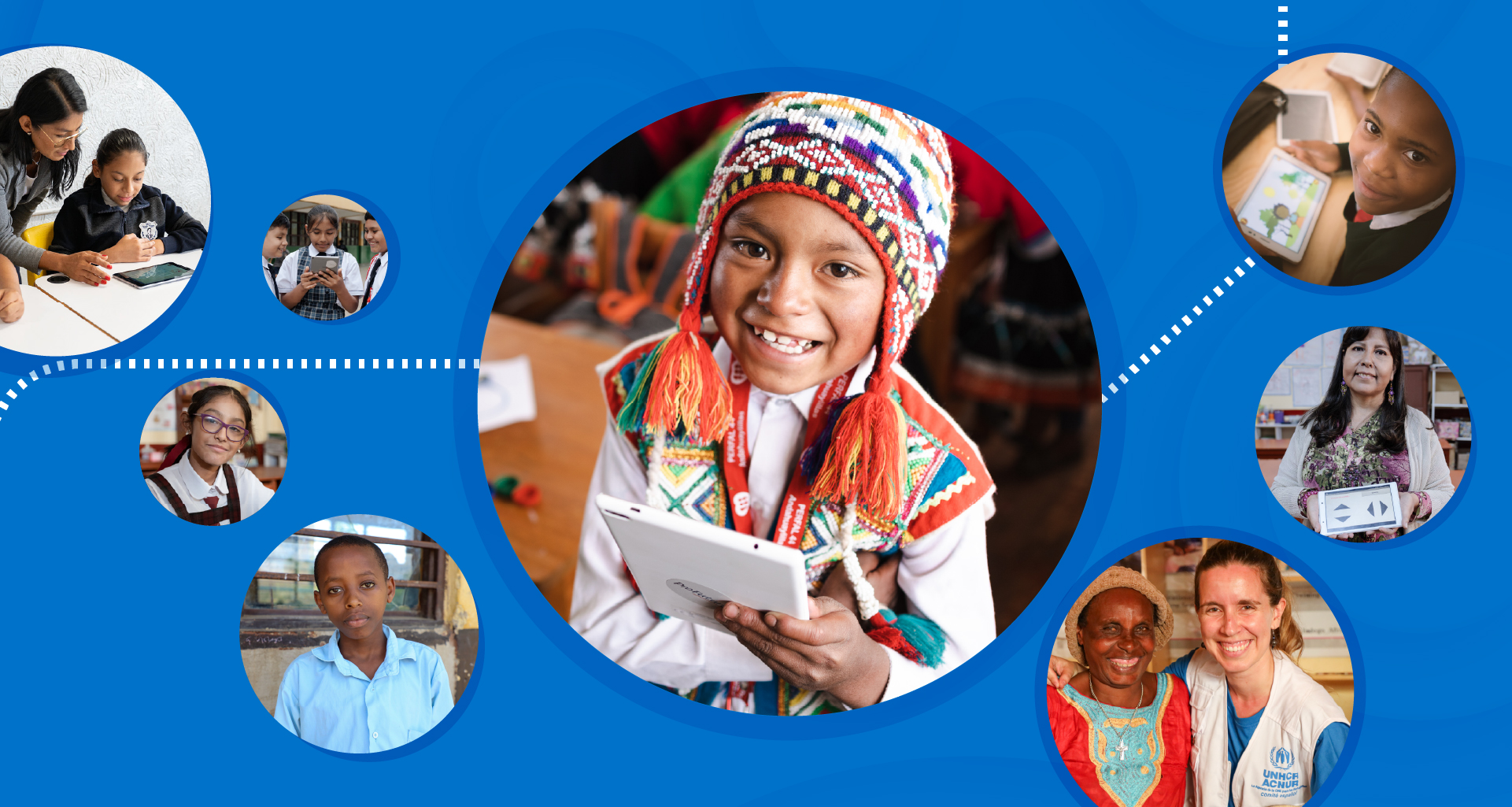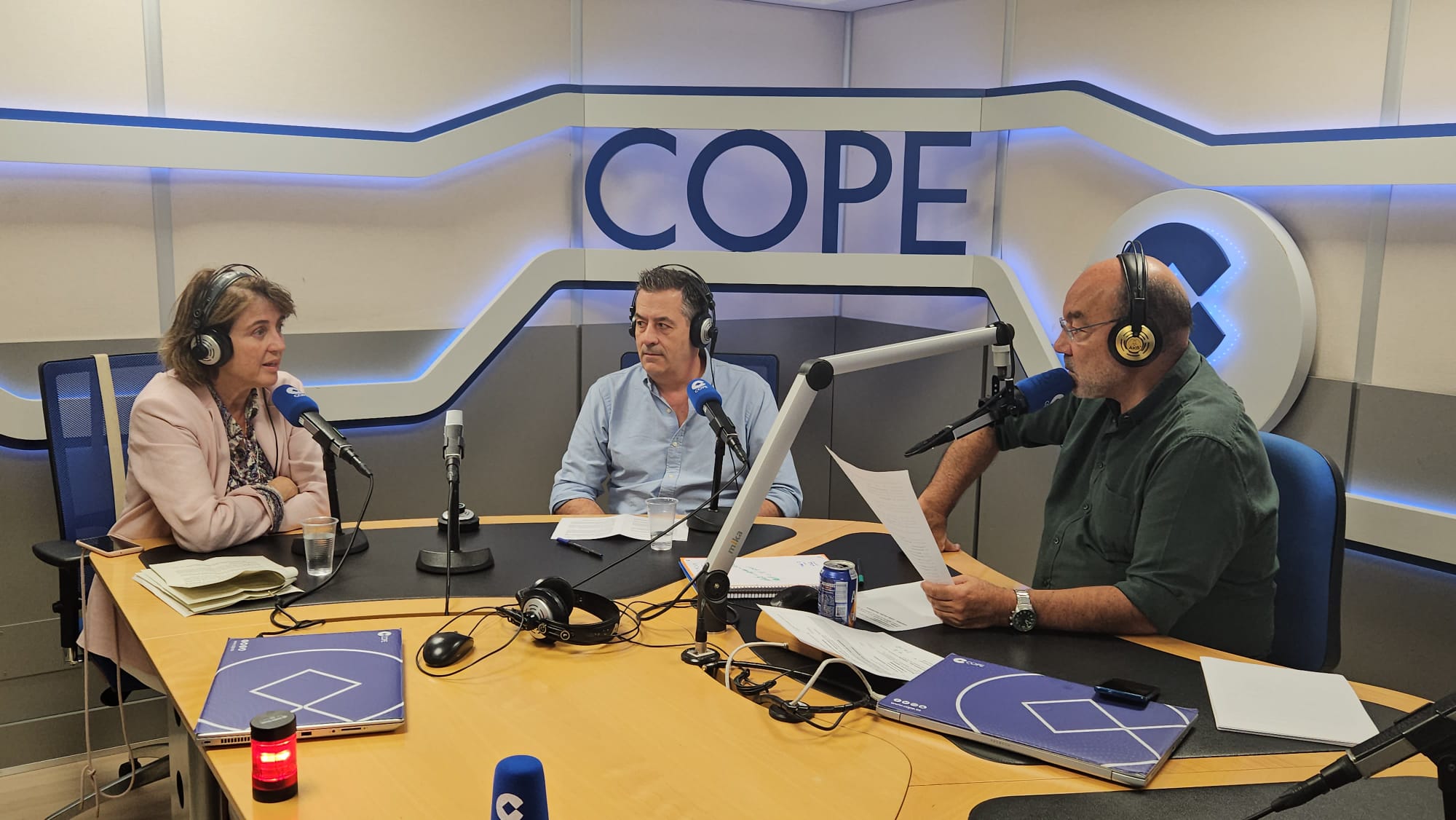During her recent trip to Spain, Colombia’s Minister of National Education, María Victoria Angulo, included ProFuturo, of which the Colombian government is a strategic partner, on her agenda. The minister and her team held a working meeting with the director general of the Telefónica Foundation, Carmen Morenés, the director general of ProFuturo, Magdalena Brier, and the manager of ProFuturo in Latin America and the Caribbean, Diana Hincapié.
The meeting addressed current issues in the ecosystem of educational innovation in Colombia and the progress of ProFuturo’s intervention in the South American country. María Victoria Angulo and Magdalena Brier were also interviewed as part of the ProFuturo Observatory’s “Conversations”.
During the meeting, the minister commented on the steps that Colombia and other countries in the region are taking in terms of educational innovation, including school Internet connection, especially in rural areas, professional teacher training and the evaluation of digital skills: “Latin America needs not to lose the momentum of recent years, where education has become a top issue on the agenda. Being aware of digital skills development is no longer an additional or ancillary issue.”
In fact, the different countries in the region are making a firm commitment to digital education as a lever to reduce inequalities and the gaps that separate the most vulnerable from quality education. “Latin America has started to invest heavily in Internet connection. Connecting schools and rural areas is fundamental, and it is critical in an educational space, but also in a cultural and family environment. The family has also taken on or resumed a very active role in the learning process,” says the head of the Colombian education system.
In Colombia, together with the Ministry of Information and Communication Technologies (MinTIC), the Ministry of National Education is advancing in a rural Internet connection project whose goal is to reach 14,000 connected schools. Collaboration, both at public and private level, is key to accelerating the processes of educational digitalisation and innovation. In this respect, the minister made her position clear: “When you call for education to be a commitment of a whole country, you cannot think only of the public sector, it must be public and private, respecting competencies, roles… Alliances with the Telefónica Foundation, ProFuturo, and other actors in the private sector have been fundamental because the public sector can provide policy alignments, the public sector is a general investment…, but in order to reach each municipality, each actor, I have to add up. And that’s what alliances like these do, as well as having a know-how that allows them to invest in innovation, to invest in digital resources…”.

ProFuturo in Colombia
In our almost six years of existence, ProFuturo has reached 14 Latin American countries, benefited 16.7 million students and trained 790,304 teachers in the region. Our education programme started in Colombia in 2017 with small actions and since then, ProFuturo is implemented in more than 250 schools across the country, has benefited 3.75 million school-aged children and trained 172,000 teachers. In 2021 alone, the beneficiaries were almost 2,000,000 students and more than 61,000 teachers.
In the case of Colombia, two local projects stand out where educational innovation has become a real agent of transformation. With “Education for Peace”,ProFuturo promotes peaceful school coexistence on a larger scale, through the implementation of citizenship competencies in teachers and the development of socio-emotional skills in children from year two to year five. With “ICT Family School” we have brought families and carers closer to the educational process of their children, through the appropriate use of ICTs, to contribute to reducing the generational digital gap.






